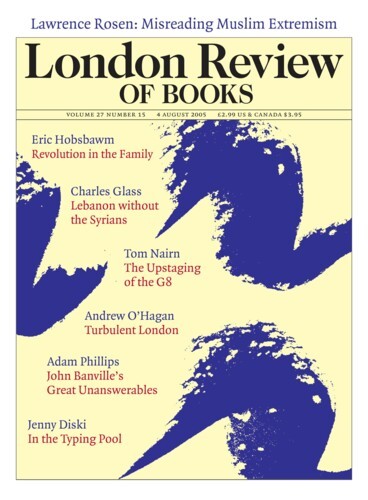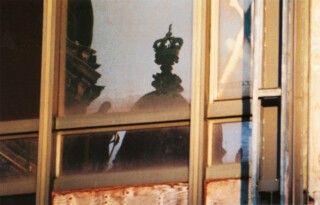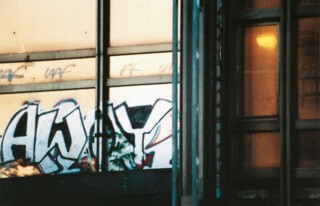Why go to the Venice Biennale and further burden a city already sinking under the pressure of its own attractiveness? It’s simple: the Biennale remains the best crash-course in contemporary art, with two major surveys, a score of national pavilions, and sundry projects scattered around town, sometimes in exquisite churches or palazzi. Documenta, the other prestigious international exhibition in Europe, tends to be more curator-driven; also, it takes place only every five years, and its setting, Kassel in Germany, isn’t a World Heritage Site.
For the first time in its 110 years, the Biennale (on view until 6 November) is directed by two women, both Spanish. María de Corral arranged the exhibition in the Italian pavilion, which is anchored by established figures: among the 42 artists in 34 rooms are such champions as Francis Bacon, Philip Guston and Antonio Tapiès, and such contenders as Rachel Whiteread, Thomas Ruff and William Kentridge. Rosa Martínez selected the survey in the vast Arsenale, the old shipyard, where 49 artists and/or groups are spread out over nine thousand square metres.
Both exhibitions include work that alludes to the present debacle of war and empire. Barbara Kruger, who was awarded a Golden Lion for lifetime achievement, has stencilled the façade of the Italian pavilion with Bushisms such as ‘Things Are Going as Planned’ and ‘God Is on My Side. He Told Me So’; in the Arsenale, Christoph Büchel and Gianni Motti document their negotiations with the Cuban government to evict the US military and to rent Guantanamo Bay as a cultural centre. In a project not allowed to proceed, Gregor Schneider proposed for the San Marco Piazza a huge black cube that combines the archetypal form of American Minimalism with the Kaba monument in Mecca, while the Afghanistan entry, displaced to a distant palazzo, is a video of a robed woman whitewashing bombed rubble.
Some of the national pavilions also allude to war, cold and hot. A slide projection in the Russian pavilion shows a sequence of large photos of four soldiers in red uniform on a wintry field who advance towards the viewer each time a mechanism is tripped, until an explosion throws them back flat on the snow: a funny little allegory of the steady advance of the Soviet Union and its rapid collapse. Meanwhile, the Japanese pavilion presents close-ups of old fashions, cosmetics and skin, some burned by the atomic bombs dropped 60 years ago this month. Other projects at the Biennale tend to a mix of passivity and apocalypticism, which is common enough in the culture. For example, when the figure appears in art here, it is almost always anonymous and abused. Two hundred years ago the human body represented an ideal of transcendent beauty; today it is far more likely to signify a reality of everyday subjection.
Some early reports have deemed this Biennale ‘conservative’. What this means isn’t certain, perhaps little more than that this exhibition is less chaotic than the 2003 one directed by the Italian Francesco Bonami. Yet this ‘conservatism’ has its benefits: one can pick out several tendencies that might be used, provisionally, to orient an otherwise incoherent field of international practice. For all its apparent diversity, much of today’s art conforms to four or five formats and/or modes. First, there are plenty of readymades, assemblages and installations that highlight the techy, the funky, or both at the same time. At the Biennale two hot artists use such means to exacerbate spectacle culture. Mariko Mori has contrived Wave UFO, a hyper-Pop pod-environment that one enters with a few others to space out for a few minutes, while Francesco Vezzoli has produced an over-the-top promo for a remake of Caligula: a kind of ‘Passion of the Caesar’, which stars Helen Mirren, done up à la Fellini-Rome, and ends with Gore Vidal promising that this extravaganza is ‘coming soon to a theatre near you’. Also pervasive here as elsewhere are the large painterly photograph and the even larger projected image, both of which are often treated digitally. These formats have become international idioms, and point to a paradox whereby, even as ‘the cinema’ is declared dead, ‘the cinematic’ now appears almost everywhere: in computer games and TV adverts, on building façades.
Sometimes such ‘advanced’ means are turned to questions of identity and difference (one sophisticated split-screen video juxtaposes everyday life in New York and Ramallah), but more often these issues are explored through a bricolage of ‘advanced’ and ‘archaic’ forms. This ethnopoetic way of working, initiated by artists such as Jimmie Durham and elaborated by others like Gabriel Orozco (both of whom are represented here), is exemplified by an elaborate installation by Sergio Vega that wryly tests the old myth of Brazil as a newfound paradise against the complicated realities of the present. This mode of investigation is often archival: its practitioners are drawn to lost moments, marginal figures and outmoded forms. Two masters of this strategy are on view in the Italian pavilion: in a large installation, William Kentridge looks back to George Méliès and the origin of cinema, and creates, in homage, his own fantastic Voyage to the Moon; and in a discreet film (stills from which are shown here), Tacita Dean meditates on the stranded Palast der Republik, the old seat of the GDR government in Berlin scheduled for demolition.
In some ways this contrast and/or combination of advanced and archaic means, of new and outmoded media, is not new to contemporary art but runs back to the first decades of the 20th century, when Modernists were caught up in an earlier moment of the dialectic of technological transformation and cultural confrontation, of ‘futurism’ and ‘primitivism’. Then, artists struggled to respond to modernisation, as they do again today, only now in the far more penetrative register of media, market and empire that we have come to naturalise as ‘globalisation’. There are many signs of this at the Biennale. One is the presence for the first time of a Chinese pavilion; the cover of the Biennale brochure shows a hip Chinese couple at home in the capitalist world of art tourism. Another is the dominance of English wherever language appears in the art: like two strangers who default to this tongue in a land foreign to both, artists turn to English in order to address as many people as possible. (Once the introduction of language into art was a radical move, as in collage, and again later in Conceptual art with the displacement of the visual by the verbal; now, whatever else it might do critically, it also underscores the linguistic imperialism of the bellum Americanum.) Yet perhaps the most telling sign of this heightened modernisation is the preponderance of installations featuring projected images that wash over the viewer, in immersive experiences of ‘cinematic’ delirium in which representation and space, media and body, are no longer felt to be distinct. Such projects work to engage a new intensity of spectacle that has accompanied the new level of modernisation, but often in a way that acclimatises us to it ‘aesthetically’.
Leave it to two old hands to point – one directly, the other obliquely – to this problematic of modernisation today. In the middle of the Arsenale, Rem Koolhaas displays 38 documentary banners on the subject of the ‘Expansion of Art World’ and the role of celebrity architecture in it, collating research drawn from recent projects of his Office of Metropolitan Architecture, which is complicit with this cultural side of neo-liberalism: ‘Between 1995 and 2005,’ one banner reads, ‘we proposed 43 soccer fields of new museums,’ from Tate Modern to renovations at MoMA and the Hermitage. ‘Why modernise at all?’ Koolhaas asks. ‘At what cost modernisation?’ Can one abstain from it? Might the international expansion of art and architecture be a new form of cultural entropy? And, he persists (with the vast Hermitage in mind, rich in objects but poor in resources), might there be a virtue in neglect? Might neglect be used ‘to expose value’?
Then there is Ed Ruscha in the US pavilion, as ever understated except for his title: Course of Empire. This is an allusion to a cycle of five paintings from 1836 by the British-born American artist Thomas Cole, which illustrates the life of empires from savage beginnings, through pastoral peace, (neo-)classical perfection, war and violence, and finally to a ruinous landscape in which nature has reclaimed everything. Ruscha has no such moralistic tale to tell. What he does, in the two symmetrical galleries of the neo-classical pavilion, is to hang ten paintings, five in black and white from 1992 in one room, mirrored by five in colour from 2002 in the other. Each early Blue Collar picture shows a working structure in or near Los Angeles represented in a simple, graphic manner, and is paired with a picture of the same structure painted ten years later. Some enterprises have done well: the Old Tires building has expanded. Some have changed hands: the signs on a warehouse are now in an Asiatic language. Others have fallen into disuse: one telephone booth is a relic from a pre-mobile time when shared amenities still existed. The US is an empire, but some forces course through it in ways that are not in its control.
Send Letters To:
The Editor
London Review of Books,
28 Little Russell Street
London, WC1A 2HN
letters@lrb.co.uk
Please include name, address, and a telephone number.



